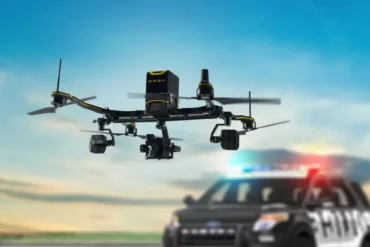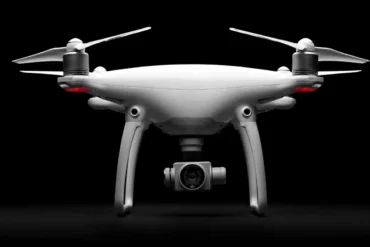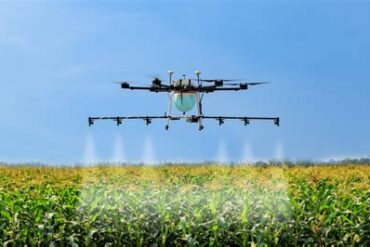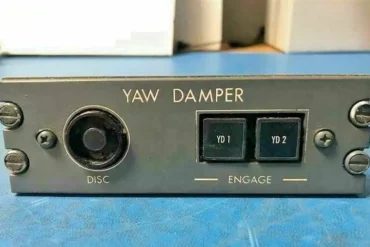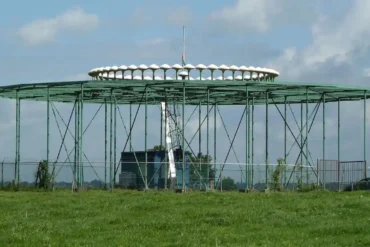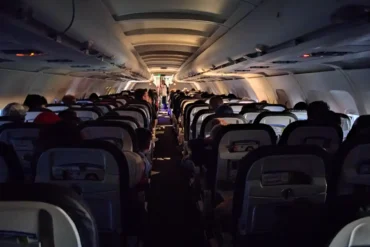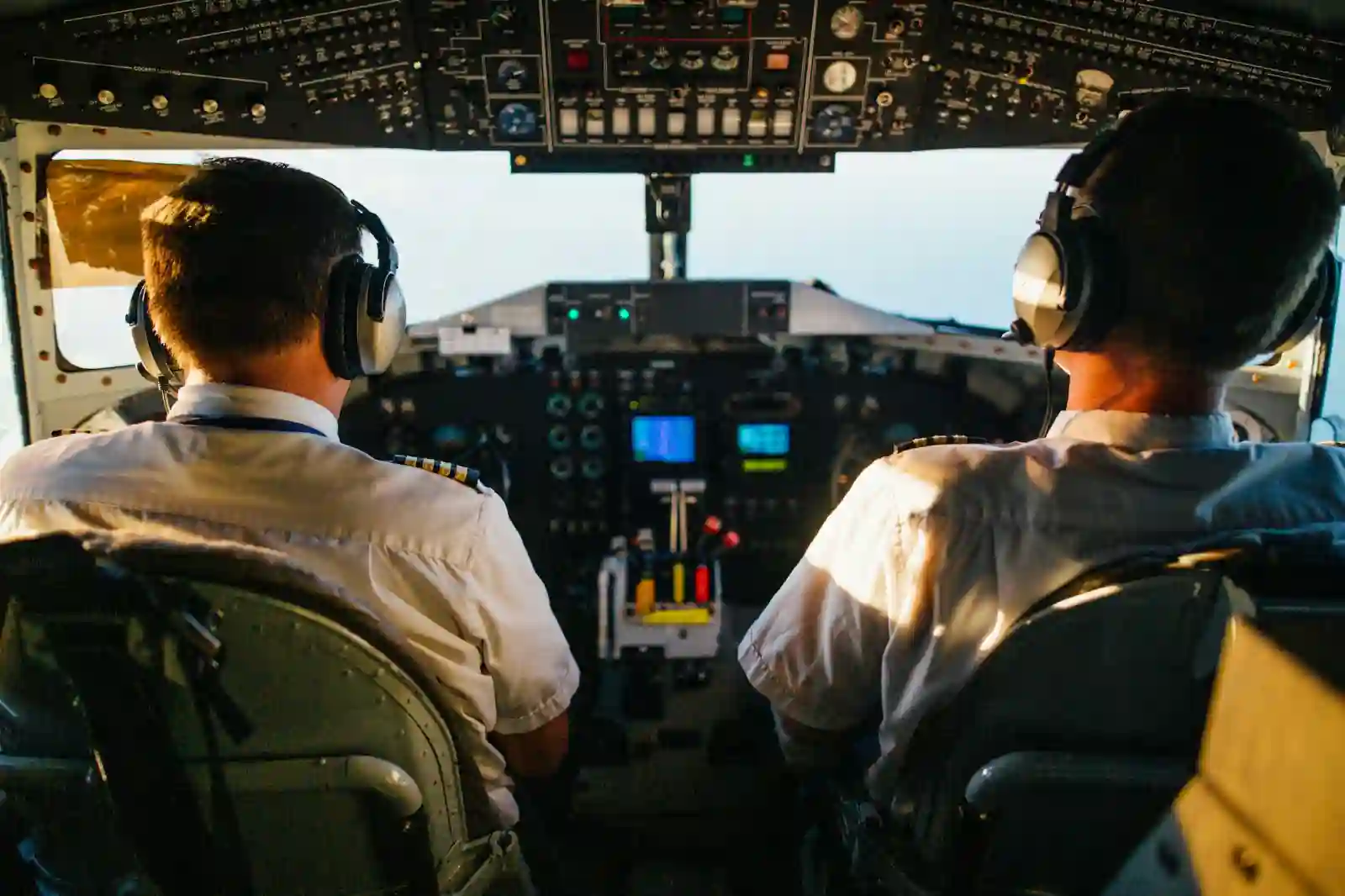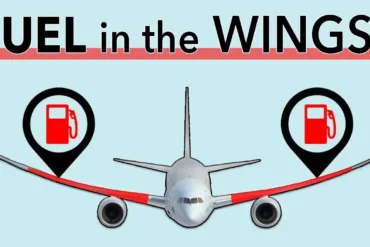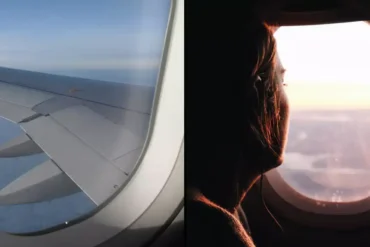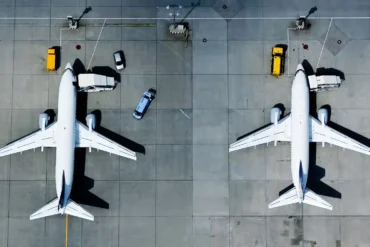When it comes to drone flying, wind resistance is a pretty big deal. The ability to handle strong winds plays a huge role in keeping your drone operations safe and efficient. Today, we’re going to dive into the pinnacle of wind resilience, called level 7.
Why Level 7 Wind Resistance Matters for Drones
Level 7 wind resistance is the gold standard when it comes to protecting drones from strong winds and potential debris hazards. This designation is carefully designed to give drones the maximum shielding against powerful gusts.
Reaching level 7 wind resistance requires sturdy materials and specialized features in the drone’s construction. A tough frame, windproofing mechanisms, and an enclosed propeller system work together to maintain stability and maneuverability, even when facing intense winds.
If you opt for a drone with level 7 wind resistance, it opens up a world of possibilities. Whether you’re a professional photographer capturing aerial shots or an adventurous explorer traversing diverse landscapes, a wind-resilient drone expands your horizons.
Moreover, drones with level 7 wind resistance are better equipped to handle stormy or windy weather. While no drone is completely damage-proof, the elevated wind resistance substantially reduces the risk. This assurance ensures that your drone is built to withstand inclement conditions, giving you peace of mind.
It’s important to note that not all drones are designed to meet level 7 wind resistance standards. Some drones are better suited for light winds, while others have lower wind resistance thresholds. So, carefully considering a drone’s wind resistance capabilities before making a purchase or venturing into windy areas is a must.
Level 7 wind resistance represents the pinnacle of what’s achievable for drone wind resilience. Drones with this level of protection are meticulously crafted to brave robust winds and potential debris, making them ideal for navigating windy landscapes. Investing in a level 7 wind-resistant drone ensures a perfect blend of stability and protection, allowing you to soar with confidence in diverse weather conditions.
Digging Deeper into Level 7 Wind Resistance
When faced with windy conditions during drone flights, having robust wind resistance is absolutely essential. Enter level 7 wind resistance – the ultimate in wind resilience, offering drones unbeatable protection against powerful gusts and aerial obstacles.
A key aspect of level 7 wind resistance is the incorporation of an enclosed propeller system. This clever design acts as a shield, preventing direct wind impact on the propellers and reducing the drone’s vulnerability to gusts. The enclosed system also acts as a guard against debris, enhancing the drone’s durability in turbulent weather.
With a drone engineered for level 7 wind resistance, you gain the ability to navigate even the most challenging windy conditions with ease. The drone’s stability and control remain rock-solid in the face of intense gusts, allowing you to capture stunning aerial footage or execute precise maneuvers without a hitch.
Furthermore, a level 7 wind-resistant drone is built to be more resilient in stormy or windy conditions. Although not completely indestructible, its chances of survival in harsh winds are substantially higher than drones with lower wind resistance levels.
It’s worth noting that not all drones are designed to meet the criteria for level 7 wind resistance. When looking for a drone that can handle windy conditions like a champ, make sure to check the wind resistance level of the specific model you’re considering. Confirm that it aligns with your desired wind speed requirements and has the necessary features to effectively combat strong winds.
Level 7 wind resistance is the ultimate in wind protection for drones. Drones meticulously crafted to achieve this level offer unparalleled stability, control, and durability, making them an excellent choice for soaring through windy landscapes or challenging weather scenarios.
Building a Drone with Level 7 Wind Resistance
When you’re planning drone flights in gusty conditions, having robust wind resistance is absolutely crucial. Level 7 wind resistance is the cream of the crop, providing drones with the ultimate safeguards against powerful gusts and airborne debris. Achieving this elevated wind resistance level requires careful consideration of materials and features during the drone’s construction.
A key feature required for level 7 wind resistance is a sturdy frame. The frame is essentially the drone’s backbone, ensuring structural integrity even amidst turbulent winds. Constructed from tough materials like carbon fiber or high-strength alloys, it can withstand the forces exerted by the wind.
Windproofing measures play a vital role in achieving level 7 wind resistance. This involves designing the drone with a streamlined shape to reduce wind drag, incorporating aerodynamic features like angled edges and smooth surfaces. Additionally, integrating wind deflectors or shields around vulnerable components adds an extra layer of protection against the impact of forceful winds.
An enclosed propeller system is another must-have feature for robust wind resistance. Uncovered propellers are prone to catching the wind, causing instability and making the drone harder to control. Encasing the propellers within a protective housing improves the drone’s aerodynamic stability, ensuring it maintains control even when confronted with intense gusts.
Building a drone with level 7 wind resistance offers numerous advantages. It instills the drone with the confidence to soar smoothly through windy conditions, making it an excellent choice for professional applications like aerial photography, videography, or inspection services. Additionally, such a drone is less susceptible to damage during storms or unexpected wind events, enhancing its longevity and minimizing repair costs.
However, it’s important to remember that not all drones are designed to meet level 7 wind resistance standards. Drones serve different purposes and may have varying wind resistance levels. So, consider the specific wind conditions you’ll be flying in and choose a model that aligns with those requirements.
Achieving level 7 wind resistance in a drone requires a combination of robust materials, windproofing measures, and an enclosed propeller system. This combination empowers the drone to confront strong winds and airborne debris, ensuring a dependable and secure flight experience in challenging weather conditions.
Key Attributes for Level 7 Wind Resistance in Drones
When you’re venturing into drone flights amidst windy conditions, ensuring a high level of wind resistance becomes super important. A drone with level 7 wind resistance is carefully crafted to offer optimal protection against powerful gusts and potential debris. Achieving this heightened wind resistance level requires the integration of key features into the drone’s design.
1. Sturdy Frame:
An essential component for withstanding the force and pressure exerted by strong winds is a robust frame. Drones engineered for level 7 wind resistance use durable materials like carbon fiber or aluminum alloy. These materials, known for their excellent strength-to-weight ratio, guarantee the drone’s stability and structural integrity even in the most challenging wind conditions.
2. Windproofing Measures:
To minimize the impact of wind on the drone’s flight stability, windproofing measures come into play. Specially designed aerodynamic shapes and structures are employed to reduce wind drag. Furthermore, drones boasting level 7 wind resistance often feature wind-resistant covers and coatings, fortifying the protection against wind infiltration into internal components.
3. Enclosed Propeller System:
The propeller system plays a critical role in preserving stability and control during turbulent flights. Drones designed for level 7 wind resistance typically incorporate an enclosed propeller system, shielding the propellers within a protective housing. This design not only enhances aerodynamics but also boosts safety by reducing the risk of damage caused by wind-blown debris.
By seamlessly integrating these features, a drone can achieve level 7 wind resistance, making it highly adept at navigating windy conditions. Whether you’re a professional aerial photographer capturing shots in gusty locales or a drone enthusiast enjoying flights in challenging weather, a drone with level 7 wind resistance stands as the optimal choice.
It’s crucial to emphasize that not all drones available in the market are engineered to meet this elevated level of wind resistance. When selecting a drone, carefully scrutinize the manufacturer’s specifications, seeking models expressly tailored for windy conditions. Investing in a level 7 wind-resistant drone ensures the confidence and reliability you need for safe flights, even when faced with formidable winds.
Level 7 Wind Resistance: The Ultimate Protection for Drones
When it comes to drone flights in windy conditions, having a high level of wind resistance is an absolute must. Enter level 7 wind resistance, a game-changer in the drone world. Drones crafted to meet this pinnacle of wind resistance are engineered to endure the most forceful gusts, delivering the ultimate protection against turbulent weather.
Distinguishing a level 7 wind-resistant drone from its counterparts is its robust construction and advanced features. These drones are fashioned from strong and durable materials capable of withstanding the force of powerful winds without compromising structural integrity. The frame of a level 7 wind-resistant drone is meticulously designed to exude rigidity and stability, minimizing any flex or movement induced by wind pressure.
In enhancing a drone’s resilience to wind, windproofing measures play a pivotal role, complementing the sturdy frame. These measures may include aerodynamic design elements like streamlined contours and smooth surfaces, effectively reducing drag and turbulence. Additionally, some drones integrate wind deflectors or specialized coatings to diminish wind’s impact on performance.
A distinctive feature characterizing a level 7 wind-resistant drone is the presence of an enclosed propeller system. Unlike open propeller designs, this enclosed system shields propellers from crosswinds or debris, heightening the drone’s stability in turbulent conditions and minimizing the risk of propeller damage. This design ensures uninterrupted flight, especially when navigating challenging weather.
With a level 7 wind-resistant drone, you can navigate windy conditions confidently, without worrying about erratic movement or loss of control. Whether engaged in aerial filming, inspections, or search and rescue operations, this level of wind resistance provides the reliability and stability essential for diverse tasks.
However, it’s important to acknowledge that not all drones are engineered to meet level 7 wind resistance. If you plan to fly frequently in windy conditions, investing in a drone explicitly crafted for high wind resistance is advisable. By selecting a drone aligned with this wind resistance standard, you safeguard both the safety and performance of your drone amidst the most formidable weather challenges.
The Importance of Wind Resistance for Drones
The significance of high wind resistance becomes clear when piloting drones in gusty conditions, particularly when it comes to level 7 wind resistance. A drone meticulously designed to meet this standard can withstand the mightiest wind gusts, making it an ideal choice for navigating challenging wind scenarios.
A standout advantage of a drone featuring level 7 wind resistance is its capacity to offer supreme protection against wind and debris. Whether you’re contending with a storm or navigating gusty terrains, a drone with this level of wind resistance significantly decreases the risk of damage. This is especially crucial for professional drone operators who rely on their drones across diverse tasks.
Key requirements for achieving this heightened wind resistance include a robust frame, windproofing measures, and an enclosed propeller system. These elements work together to ensure the drone maintains stability and sustains flight even in adverse wind conditions.
Investing in a level 7 wind-resistant drone gives you the assurance that your drone is optimized for flight in windy conditions. This means you can confidently operate your drone where others may struggle or risk damage.
However, it’s important to remember that not all drones are crafted to meet level 7 wind resistance standards. When searching for a drone with superior wind resistance, carefully scrutinize models specifically highlighting this feature. Additionally, consulting manufacturer specifications and reviews ensures alignment with your particular wind resistance requirements.
In conclusion, having a drone with level 7 wind resistance is instrumental for navigating windy conditions. These drones, constructed with durable materials and tailored features, stand resilient against powerful gusts. By investing in a level 7 wind-resistant drone, you can embark on flights with confidence, minimizing risks of damage or loss due to wind-related incidents.
Why Level 7 Wind Resistance is Crucial for Drones
Navigating drones in gusty conditions requires a high level of wind resistance. This crucial attribute is exemplified in level 7 wind resistance, specifically designed for drones to withstand formidable gusts, making them an optimal choice for challenging weather scenarios.
A key advantage of drones with level 7 wind resistance is their ability to endure storms and turbulent wind events. While no drone is completely indestructible, those with higher wind resistance significantly enhance their chances of survival amidst harsh winds, potentially saving you from costly repairs or replacements.
For drones to achieve level 7 wind resistance, robust materials and features are essential. A sturdy frame, capable of withstanding the forces unleashed by strong winds, is a pivotal component ensuring stability and control even in adverse weather conditions.
Complementing the robust frame, windproofing measures play a vital role in achieving level 7 wind resistance. These measures include sealing any openings or gaps in the drone’s body to prevent wind intrusion, thereby avoiding instability. Additionally, a level 7 wind-resistant drone often integrates an enclosed propeller system, heightening protection against wind and debris.
Possessing a drone with level 7 wind resistance not only enhances safety and stability during flight but also instills confidence in navigating windy conditions. Whether capturing aerial footage professionally amidst gusty weather or indulging in drone hobbyist activities on a windy day, a high level of wind resistance is indispensable.
It’s important to acknowledge that not all drones available meet the level 7 wind resistance standard. When acquiring a drone, scrutinize the manufacturer’s specifications to confirm its suitability for the intended wind conditions. Investing in a drone with high wind resistance undeniably elevates the flying experience, offering the confidence to confront challenging weather conditions.
The Significance of Level 7 Wind Resistance for Drones
In the exciting world of drone applications, an often-overlooked yet crucial aspect is the drone’s wind resistance level. Especially important for reliable and safe operation in adverse weather conditions, the concept of level 7 wind resistance stands out as a game-changer.
Drones engineered with level 7 wind resistance excel at enduring the most severe wind events. While not completely immune to damage, their survivability surpasses that of drones with lower wind resistance. Achieving this standard involves a combination of robust materials and specific features dedicated to enhancing stability and mitigating the impact of wind on flight performance.
A fundamental requirement for level 7 wind resistance is a resilient frame. Constructed from materials like carbon fiber or high-quality plastic, the frame ensures structural integrity, enabling the drone to brave the forces exerted by robust winds without compromising stability.
Windproofing measures are another vital aspect of achieving level 7 wind resistance. Employing aerodynamic designs, such as streamlined bodies and smooth surfaces, helps to reduce wind drag. Advanced drones may also integrate sensors and intelligent flight control systems to dynamically adjust flight parameters in response to gusts.
An enclosed propeller system emerges as a key component for drones boasting level 7 wind resistance. By encapsulating the propellers within a protective housing, the drone gains resilience against wind interference. This design mitigates the direct impact of gusts on the propellers, leading to heightened stability, ultimately enhancing overall wind resistance.
In essence, drones crafted to meet level 7 wind resistance prove to be an excellent choice for navigating windy conditions. Offering enhanced stability, reduced susceptibility to damage during wind events, and improved flight performance, they cater to diverse needs. However, it’s crucial to understand that not all drones are tailored for this wind resistance level, necessitating a careful selection aligned with your specific user requirements and flying conditions.


